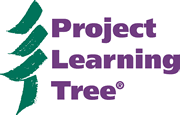When most Americans think about Washington, DC, they think of the White House, Capitol, and Smithsonian. But the nation’s capital is also home to almost 600,000 people in neighborhoods throughout the city.
One advantage of being in Washington is the proximity of national leaders. For example, several years ago, students, teachers, and the principal of Barnard Elementary School attended a reception hosted by the American Forest Foundation, the national sponsor of Project Learning Tree, the U.S. Forest Service, and the National Association of State Foresters, at which Secretary of Agriculture Tom Vilsack spoke in honor of International Year of Forests.
“It was very exciting for our kids,” said teacher Geraldine Meredith. “They wore their best, crispest uniforms. For them to stand next to and talk with high-level officials who they would ordinarily only see on TV was an empowering experience for them.”
Grants from the U.S. Forest Service and Learn and Serve America are supporting PLT GreenSchools in Washington. Seven schools worked toward becoming model PLT GreenSchools: Barnard Elementary, Miner Elementary, Martin Luther King Elementary, McKinley Technology High School, Paul Public Charter Middle School, Elsie Stokes Charter School, and Thurgood Marshall High School.
Out in the Gardens
Every day is not quite as exciting as a reception with a member of President Obama’s Cabinet, but Barnard teachers have found that other GreenSchools-related activities also motivate students. With the assistance of chef and Certified Master Gardener Mark Haskell, they developed gardens, which are now being expanded. “We are in the gardens all year round, not just in nice weather,” said Meredith. “We have a life-science standard about the cycle of life—what better way to learn than to see the garden growing in one season, then dying in winter, then growing.”
Using a garden for a science lesson is exactly what is needed to keep the project sustainable, according to Haskell. “Gardens can teach anything—European and African cultures, math, writing, art,” he said. “The key is to sit down with teachers and find out what they need to accomplish, and here’s how we can do it in the garden.” At the same time, he noted, students are happy outside, they are getting physical activity to combat childhood obesity, they are adding beauty to their community, and other benefits take place.
Haskell has worked with several other D.C. schools on their gardens. “One of my favorites is in a black asphalt parking lot at Paul [Middle School],” he said. “In the middle of the drought last summer, it was blooming and it was beautiful.”
Student Voice
“Honestly, before GreenSchools, I had minimal experience with environmental work,” said seventh-grade science teacher Julia Vereen. “Now we have a way to show students that if you take care of the earth, it will take care of you, for example, by providing nutritious food for your body.”
Paul Middle School and Barnard Elementary School are located near each other. Through their shared GreenSchools involvement, Paul students mentored younger students at Barnard, starting with a project on Earth Day. U.S. Forest Service Chief Tom Tidwell and Paul 6th and 7th grade students helped 4th grade Barnard students, plus teachers, parents, public officials and community volunteers, plant Barnard’s organic, raised-bed gardens and dedicate an outdoor, instructional classroom. Vereen and Sharon McCrea, a fourth-grade teacher at Barnard, noted the advantages for both the older and younger students.
“One thing that is great about PLT’s GreenSchools is that students learn they have a voice,” she said. “Beyond us, they will take that to a level on their own.”
Little Things Add Up
According to Trisha Nakano, the wellness coordinator at Stokes, a Washington charter elementary school, PLT’s GreenSchools program has made the school community more conscious of ways to reduce waste. Last year, students measured energy usage and weighed trash. In the cafeteria, a local milk supplier now provides milk in a large dispenser, rather than in individual cartons, and a switch to an institutional dishwasher allowed the use of reusable plates and utensils. The number of photocopies is way down. Sixth-graders are now researching how to introduce composting.
“Community service is a big part of the school,” Nakano said. “Every trimester, every class does a community service project. GreenSchools is a way for us to do that.”
Tips for Success
The teachers were asked for suggestions about how to make PLT’s GreenSchools program a success. Perhaps not surprisingly, they came up with many similar ideas:
• Gather a core group of teachers: “A group of teachers is really helpful,” said Trisha Nakano, Stokes Charter School. Geraldine Meredith from Barnard Elementary agreed. “No one person can do it all,” she said.
• Supportive administration: “The principal has to see the value and teaching opportunities,” said Sharon McCrea, Barnard Elementary.
• Integrate into the curriculum: “Infuse study of the environment into the curriculum,” said Julia Vereen, Paul Middle School. “That way, it becomes a staple, not just what a few teachers do.”
• Tap into local opportunities: “There is always a resource,” said Vereen. “The worst thing that can happen is that someone says no.”
In addition, gardener Mark Haskell stressed the need to integrate garden projects into what teachers already need to accomplish. “Teachers are so busy, they don’t need new mandates of things to do,” he said. “But with a garden, you can teach anything.”
He also advised checking to see what might already exist on school grounds. For example, several schools in Washington have greenhouses that were not being used. Students at McKinley High School are now starting to raise thousands of fruit, herb, and vegetable seedlings in these greenhouses, and he is looking for partners to expand the program.


